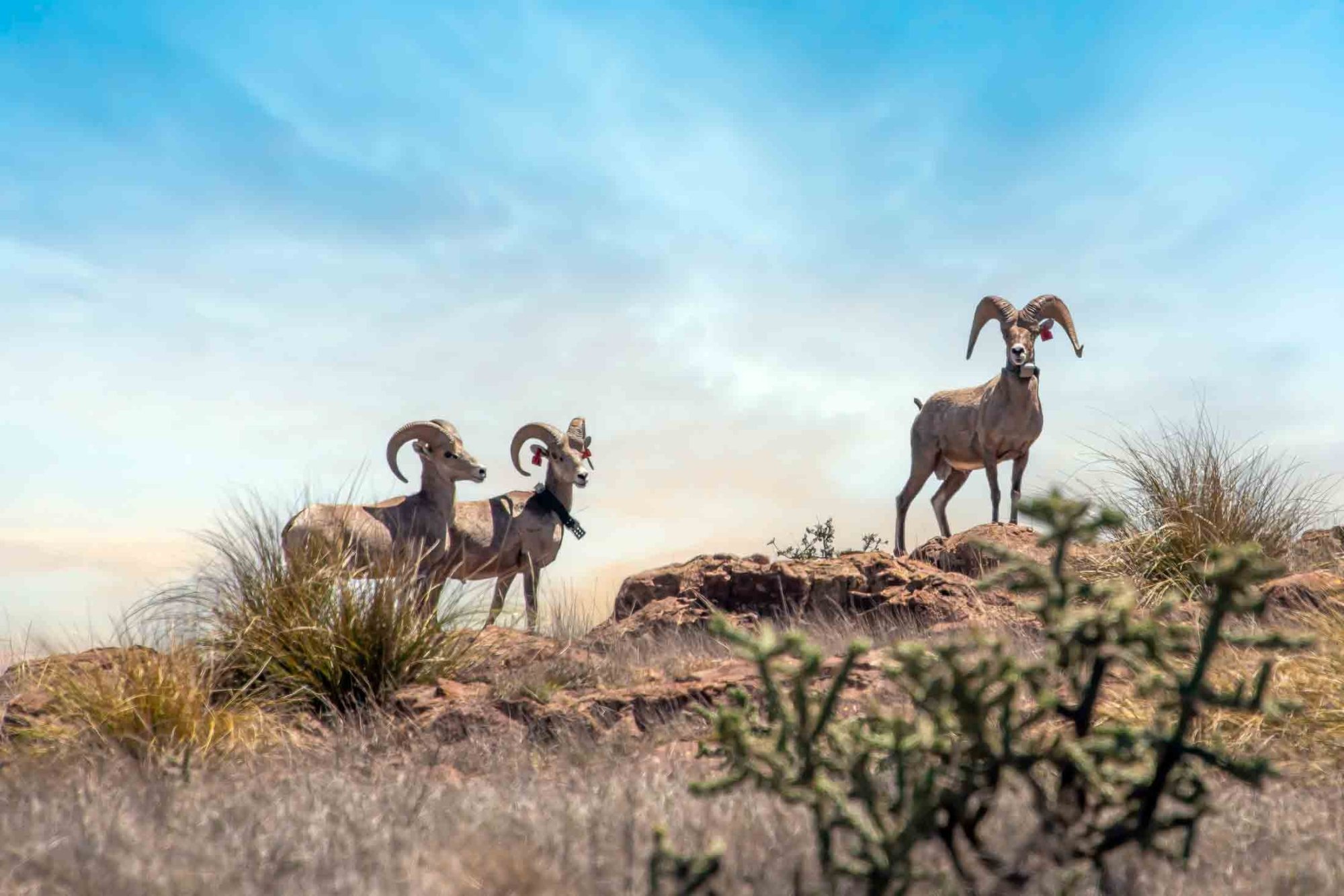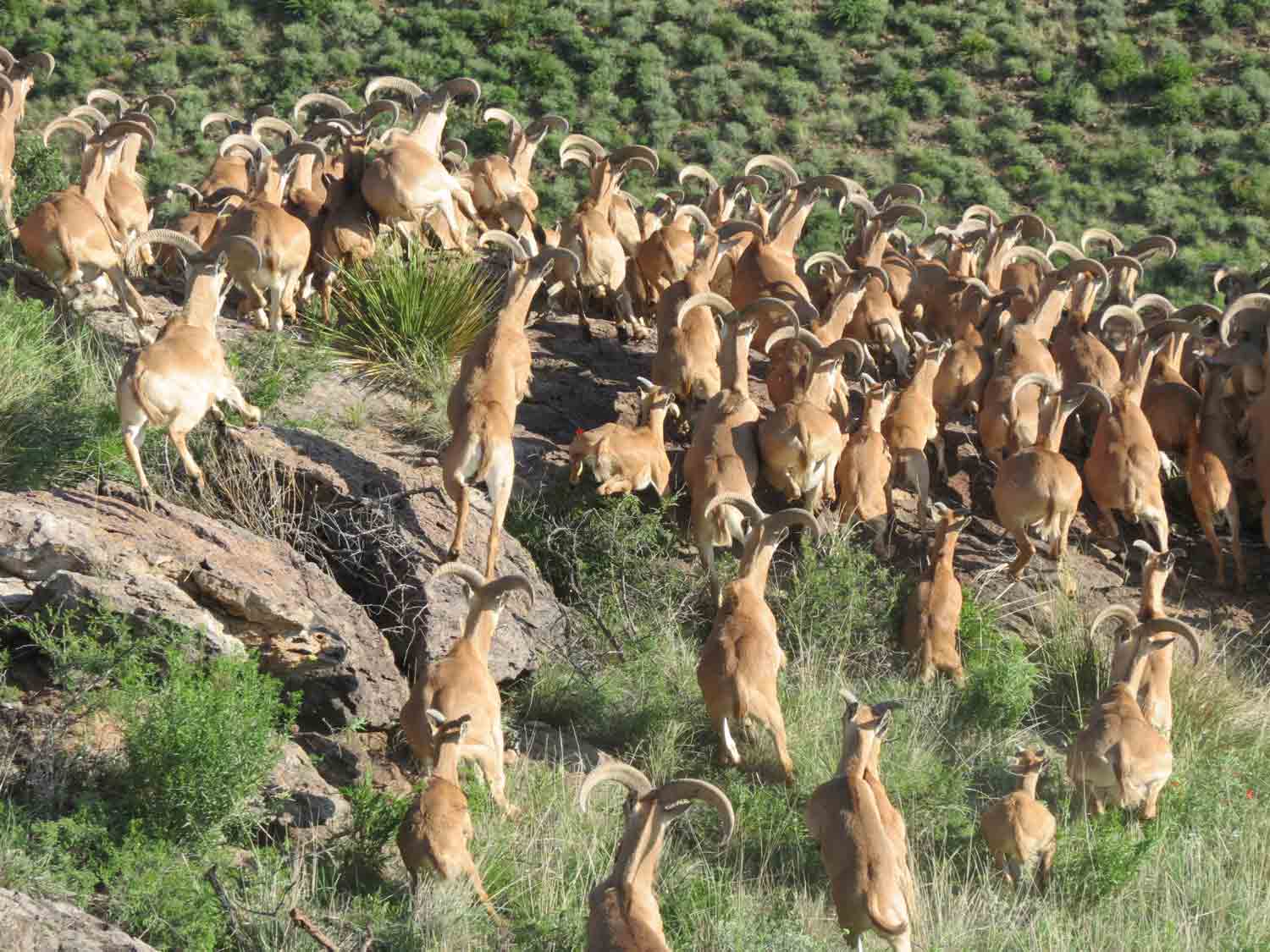
Desert Bighorn Sheep by Chase Fountain
Hosted by Texas Parks and Wildlife Department (TPWD) in partnership with Texas Parks and Wildlife Foundation (TPWF), Borderlands Research Institute (BRI), Texas Bighorn Society, and Wild Sheep Foundation, a full-day symposium on May 15 brought more than 100 stakeholders to Sul Ross State University in Alpine for an urgent discussion on the steep decline of desert bighorn sheep in West Texas.
The event—Managing Desert Bighorn Sheep in Texas: Challenges of the 21st Century—focused on the alarming spread of Mycoplasma ovipneumoniae (M. ovi), a respiratory pathogen driving population crashes of more than 50 percent in several herds across the region.
The symposium convened state and federal biologists, landowners, veterinarians, university experts, and conservation partners from across the U.S. to examine the disease threat, the role of exotic aoudad in transmission, and the broader challenges of bighorn management in rugged, privately owned landscapes.
Dr. Louis Harveson, Director of BRI and Associate Provost of Research and Development at Sul Ross, served as emcee for the day. “This isn’t a simple issue,” said Harveson. “It’s ecological, biological, economic—and personal for those of us who care about West Texas.”
Among the national experts who presented were wildlife disease specialists and public land managers from Idaho, Nevada, Nebraska and Utah. But West Texas researchers played a central role. Dr. Justin French, a wildlife biologist with BRI, shared new data from thermal aerial surveys showing extremely high densities of aoudad in the Chinati Mountains—nearly 8,000 animals in a single range, or one every 40 acres.

A group of aoudad by Froylan Hernandez.
“We’re likely looking at a six-figure aoudad population across the Trans-Pecos,” said French. “That level of abundance, combined with their ability to transmit M. ovi, poses a serious risk to native bighorns. If we want to see bighorns persist in Texas, aggressive aoudad management is going to have to be part of the conversation.”
Texas Parks and Wildlife Commission Chairman Paul Foster reinforced that message in his opening remarks: “The threat posed by disease is very real and it’s urgent. But so is the opportunity we have to work together once again to find a way forward. No agency, no organization or landowner can solve this alone. Collaboration is the only way.”
Dr. David Yoskowitz, Executive Director of TPWD, closed the symposium with a call to action: “We can’t wait for perfection. We have to move forward using the best available science, and we need partners, resources, and sustained commitment. We have that in this room—so let’s get to work.”
The symposium underscored the urgent need for collaboration among researchers, landowners, and agencies. BRI remains committed to supporting science-based strategies that protect West Texas wildlife and the landscapes they depend on.
